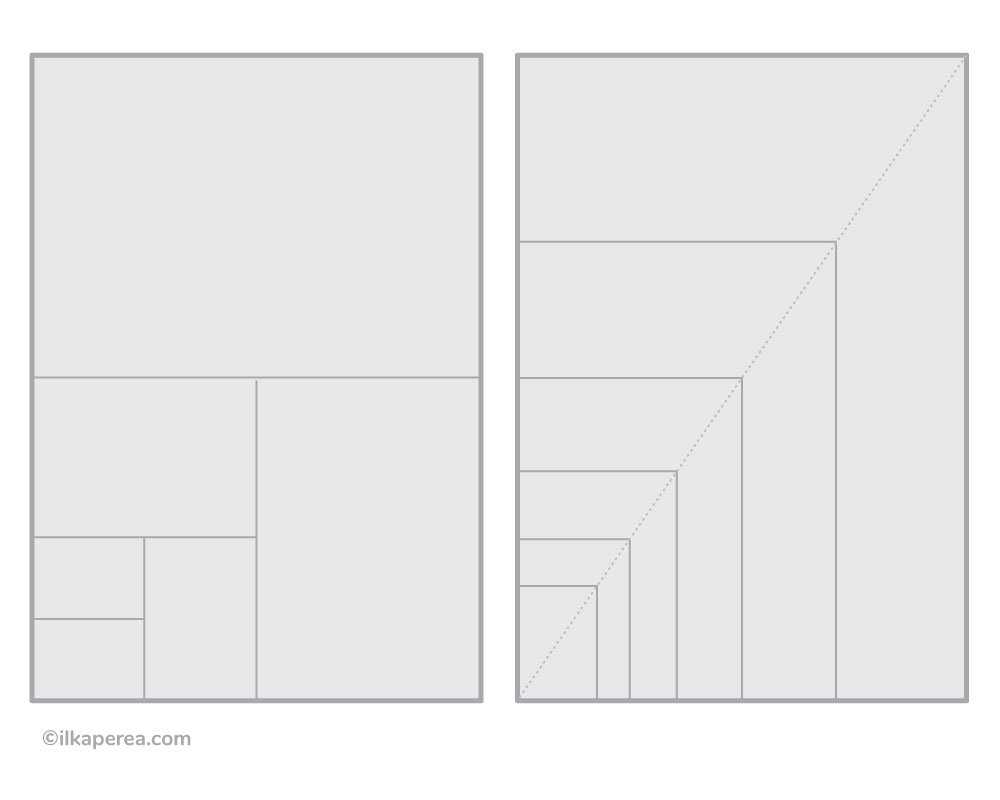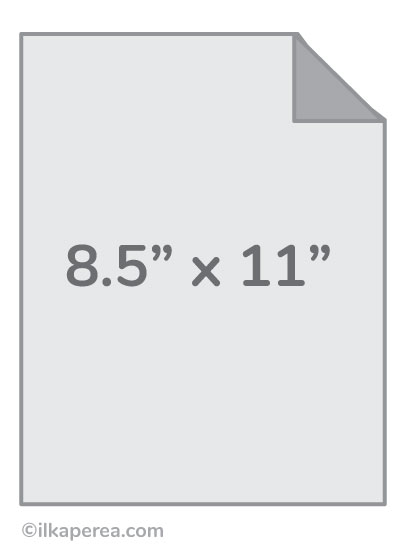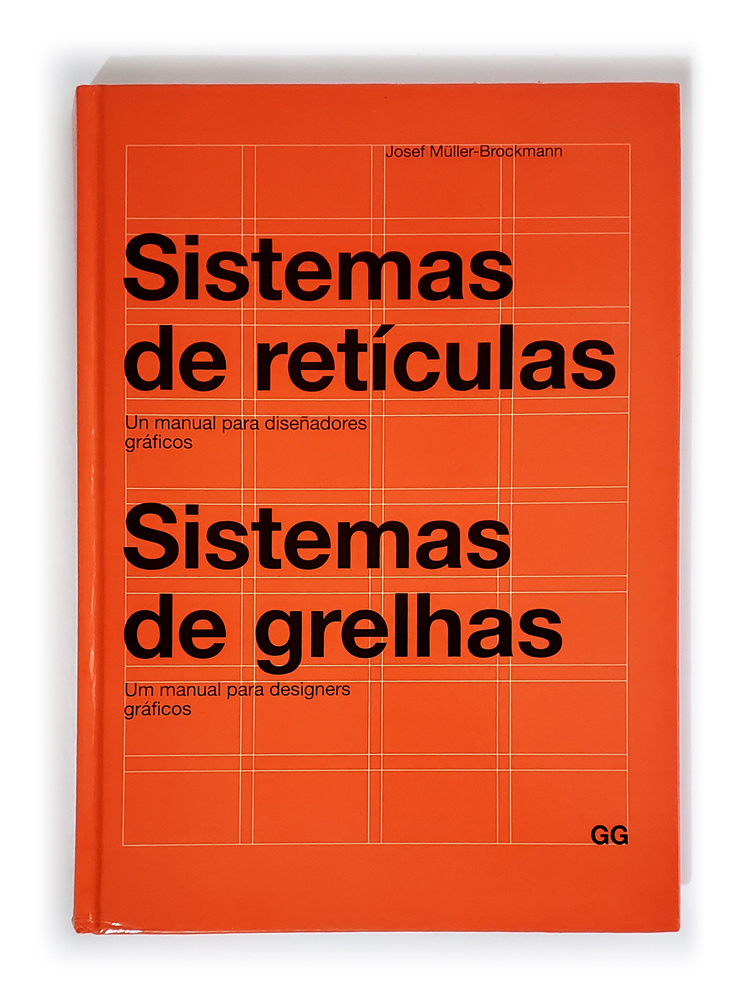Paper Sizes in Graphic Design
Last Updated on: 21st March 2024, 01:12 am
Paper is an important medium that has been significant for the transmission of information. However, paper can be even more than just an information carrier. It has not only functional but also aesthetic characteristics that all designers should know and appreciate. The right choice of paper size in graphic design depends on the use and results designers are looking for.
You’re probably familiar with the paper sizes you used for school homework or the ones you use in your office printer. These sizes can be “DIN A4” or “US Letter”. You may confuse them because they are similar but not the same size, and this difference is crucial, especially in printing jobs.
This post will explain the different paper sizes, but not all of them, just the most used ones: DIN Format and North American standards. It will also give details about their most common uses: editorial design (books, magazines, newspapers), advertising (posters, leaflets, brochures, postcards), branding (business cards, letterheads, and invoices), and many other projects.
Table of Contents
- Standardization
- What are the standard paper sizes?
- DIN vs. North American: What’s the difference?
- DIN Paper Formats
- How did the DIN format come about?
- Paper Formats: DIN 476
- The Different DIN Paper Formats and Their Application
- DIN A
- DIN A Common Usages
- DIN B
- DIN C
- DIN D
- North American Paper Formats
- Other International Paper Standards
- ANSI and CAN formats
- DIN A4 vs. US Letter
- Some Insights
- Any Thoughts?
Regardless of the type of design project, one must know the paper sizes that are handled internationally in the global market. For example, paper has a format, that format is part of the anatomy of the grid. Without knowing the size of the format, it is not possible to elaborate the grid for the design of a book or a magazine that could be printed locally or with the standards of another country.
What are the standard paper sizes?
Norms and standards exist for many products, in many industries; paper is no exception. There are advantages and certain disadvantages to creating and implementing design projects. Being aware of these standards allows designers to unify all their design works, and on the other hand, they will be able to deal with manufacturers and printers without problems since all parties will be using sizes commonly accepted in the graphic design industry.
As Josef Müller-Brockmann explains in his book “Grid Systems in Graphic Design” in economic terms: “If a format other than the DIN standards is requested, it must either be produced in the paper mill to the required dimensions, or a larger format than specified must be used in printing and then cut to the required size, which leads to a waste of paper. In both cases, production becomes more expensive.”
Today, we can no longer imagine a world without standardized paper formats. The most common are:
- DIN formats
- North American formats
DIN vs. North American: What’s the difference?
According to DIN standardization, all paper formats are based on a quite simple calculation formula: the ratio between the width and height of all sheet sizes is the same and corresponds to 1:√2. If this ratio is applied, the next smallest paper format always corresponds to the folding of the original paper format in half. Thus, an edgewise DIN A4 sheet can be divided into two DIN A5 sheets by folding it in half along the long side, and these sheets can in turn be converted into two DIN A6 sheets by folding them – theoretically, this can be continued indefinitely, but in practice, a limit is set at DIN A8.
On the other hand, the “US Letter” format, also used in the European Union as a support for letters from the United States and as a print format in computer software and mobile apps, is not identical to the DIN A4 format and cannot be calculated using the formula 1 : √2. Because the US ANSI/ASME standard is based on sizes A to E, which is calculated in inches, they are slightly wider than sheets of paper in comparable DIN formats.
While some countries, such as the US and Canada, print on US Letter size, some others, such as European countries, print on A4 paper. As can be seen in the image below, these two paper sizes have different dimensions.

DIN Paper Formats

How did the DIN format come about?
This paper format is older than 100 years old (August 18, 2022).
Before 1922, there was no standard for sheets of paper. It was common to refer to different paper sizes with terms such as “quarter format” or “octavo format”, still known today by the so-called octavo booklets, which referred to the division of the original sheet of paper (four times for quarter format [3:4], eight times for octavo format [2:3]). Thus, sheet formats were folded, and one was used as one came up with. But they were only approximations.
With the First World War, the need to standardize the industry of products and tools became evident, due to the industrial production of weapons. Thus, on December 22, 1917, the “Normenausschuß der deutschen Industrie (NADI)“, which means Standards Committee of German Industry, appeared for the first time with DIN 1 (short for Deutsche Industrie-Norm 1) of March 1, 1918.

Paper Formats: DIN 476
The engineer and mathematician Walter Porstmann was a standardization theorist. He published his book on standards theory in 1917 and joined the Standards Committee of German Industry. During the economic crisis of 1922, he finally published the first DIN standard for paper formats: DIN 476.
Porstmann united the world format with the metric area format. From then on, DIN A0 had an area of exactly one square meter (1m2). It quickly became evident that DIN paper formats brought extreme advantages, especially with the mass appearance of typewriters and teletypes, so that after World War II the German standard was adopted by most European countries.
Subsequently, there followed a “standardization wave” of almost all objects not only for the military but also for industrial and everyday use. The DIN paper formats also quickly gained international relevance and the A to D series, with the well-known A4 format, is still valid today.
The Different DIN Paper Formats and Their Application
The most common DIN formats, such as A4, are familiar to all children. However, designers need an overview of the whole spectrum of paper sizes in graphic design. DIN paper formats are grouped by the letters A to D. The A formats are the most important, as they are the reference size for the other formats. DIN A4 measures 21 x 29.7 cm.
In order to divide the paper formats into their respective application formats, four different classes from A to D were created, which are numbered in descending order of size from 0 to 10. The class 0 formats indicate the starting sizes of the respective classes, in the standard class A (DIN A0) it is exactly one square meter (1m2). Parallel to the A formats are the C formats for envelopes. In this case, the corresponding DIN C4 envelope is usually used for a DIN A4 letter, which in turn can be inserted into a DIN B4 envelope.

The basic principles according to DIN 476: adjacent formats emerge from each other by reducing by half or double (left) and all formats have the same aspect ratio (1 : √2, right); the original format of the A series (A0) has a surface area of 1m2.

DIN A
The following table shows the sizes of the DIN A0 – A10 formats:
| DIN Formats | Width x Height (in mm) | Contained in A0 |
|---|---|---|
| A0 | 841 x 1189 mm | 1x |
| A1 | 594 x 841 mm | 2x |
| A2 | 420 x 594 mm | 4x |
| A3 | 297 x 420 mm | 8x |
| A4 | 210 x 297 mm | 16x |
| A5 | 148 x 210 mm | 32x |
| A6 | 105 x 148 mm | 64x |
| A7 | 74 x 105 mm | 128x |
| A8 | 52 x 74 mm | 256x |
| A9 | 37 x 52 mm | 512x |
| A10 | 26 x 37 mm | 1024x |
To convert a graphic file to DIN format in pixels or vice versa, consider the following values:
| DIN | in mm | in cm | in pixel (300 dpi) | Surface |
| A0 | 841 x 1189 | 84,1 x 118,9 | 9933 x 14043 | 1 m² |
| A1 | 594 x 841 | 59,4 x 84,1 | 7016 x 9933 | 0,5 m² |
| A2 | 420 x 594 | 42,0 x 59,4 | 4961 x 7016 | 0,25 m² |
| A3 | 297 x 420 | 29,7 x 42,0 | 3508 x 4961 | 0,12 m² |
| A4 | 210 x 297 | 21,0 x 29,7 | 2480 x 3508 | 624 cm² |
| A5 | 148 x 210 | 14,8 x 21,0 | 1748 x 2480 | 311,1 cm² |
| A6 | 105 x 148 | 10,5 x 14,8 | 1240 x 1748 | 155,4 cm² |
| A7 | 74 x 105 | 7,4 x 10,5 | 874 x 1240 | 77,8 cm² |
| A8 | 52 x 74 | 5,2 x 7,4 | 614 x 874 | 38,5 cm² |
| A9 | 37 x 52 | 3,7 x 5,2 | 437 x 614 | 19,2 cm² |
| A10 | 26 x 37 | 2,6 x 3,7 | 307 x 437 | 9,6 cm² |
DIN A Common Usages
DIN A0: maps, technical drawings, notices
DIN A1: flipcharts, calendars, desk pads, posters
DIN A2: posters, notices, newspapers, flipcharts
DIN A3: newspapers, posters, calendars, sketch pads
DIN A4: letter and printer paper, notebooks, notepads, writing pads, magazines
DIN A5: notepads, notebooks, index cards, brochures, booklets, books
DIN A6: postcards, index cards
DIN A7 and smaller: notepads, index cards, index cards
DIN B
The DIN formats of the B series are the largest of the DIN groups. They represent the untrimmed printed sheet formats and are therefore suitable as packaging for the corresponding DIN A formats. Folders, binders, and mailing envelopes are therefore produced in DIN B. B5 and B6 are also popular formats for books.
| DIN | in mm | in cm | in pixel (300 dpi) | Surface |
| B0 | 1000 x 1414 | 100,0 x 141,4 | 11811 x 16701 | 1,4 m² |
| B1 | 707 x 1000 | 70,7 x 100,0 | 8350 x 11811 | 0,7 m² |
| B2 | 500 x 707 | 50,0 x 70,7 | 5906 x 8350 | 0,35 m² |
| B3 | 353 x 500 | 35,3 x 50,0 | 4169 x 5906 | 0,18 m² |
| B4 | 250 x 353 | 25,0 x 35,3 | 2953 x 4169 | 886 cm² |
| B5 | 176 x 250 | 17,6 x 25,0 | 2079 x 2953 | 440 cm² |
| B6 | 125 x 176 | 12,5 x 17,6 | 1476 x 2079 | 220 cm² |
| B7 | 88 x 125 | 8,8 x 12,5 | 1039 x 1476 | 110 cm² |
| B8 | 62 x 88 | 6,2 x 8,8 | 732 x 1039 | 54,6 cm² |
| B9 | 44 x 62 | 4,4 x 6,2 | 520 x 732 | 27,3 cm² |
| B10 | 31 x 44 | 3,1 x 4,4 | 366 x 520 | 13,6 cm² |
DIN C
C formats are a few millimeters larger than the corresponding A formats, but smaller than the corresponding B formats. Therefore, some DIN A4 sheets fit into a DIN C4 envelope, which in turn fits into a B4 envelope, if necessary.
| DIN | in mm | in cm | in pixel (300 dpi) | Surface |
| C0 | 917 x 1297 | 91,7 x 129,7 | 10831 x 15319 | 1,19 m² |
| C1 | 648 x 917 | 64,8 x 91,7 | 7654 x 10831 | 0,59 m² |
| C2 | 458 x 648 | 45,8 x 64,8 | 5409 x 7654 | 0,30 m² |
| C3 | 324 x 458 | 32,4 x 45,8 | 3827 x 5409 | 0,15 m² |
| C4 | 229 x 324 | 22,9 x 32,4 | 2705 x 3827 | 742 cm² |
| C5 | 162 x 229 | 16,2 x 22,9 | 1913 x 2705 | 371 cm² |
| C6 | 114 x 162 | 11,4 x 16,2 | 1346 x 1913 | 184,7 cm² |
| C7 | 81 x 114 | 8,1 x 11,4 | 957 x 1346 | 92,3 cm² |
| C8 | 57 x 81 | 5,7 x 8,1 | 673 x 957 | 46,2 cm² |
| C9 | 40 × 57 | 4,0 × 5,7 | 472 x 673 | 22,8 cm² |
| C10 | 28 × 40 | 2,8 × 4,0 | 331 x 472 | 11,2 cm² |
DIN D
This format is the least known. It is barely used. But everyone knows an example: a DVD case. It corresponds to the DIN D5 format. All other sizes of the smaller DIN series, however, are rarely used.
| DIN | in mm | in cm | in pixel (300 dpi) | Surface |
| D0 | 771 x 1090 | 77,1 x 109,0 | 9106 x 12874 | 0,84 m² |
| D1 | 545 x 771 | 54,5 x 77,1 | 6437 x 9106 | 0,42 m² |
| D2 | 385 x 545 | 38,5 x 54,5 | 4547 x 6437 | 0,21 m² |
| D3 | 272 x 385 | 27,2 x 38,5 | 3213 x 4547 | 0,10 m² |
| D4 | 192 x 272 | 19,2 x 27,2 | 2268 x 3213 | 522 cm² |
| D5 | 136 x 192 | 13,6 x 19,2 | 1606 x 2268 | 261,1 cm² |
| D6 | 96 x 136 | 9,6 x 13,6 | 1134 x 1606 | 130,6 cm² |
| D7 | 68 x 96 | 6,8 x 9,6 | 803 x 1134 | 65,3 cm² |
| D8 | 48 x 68 | 4,8 x 6,8 | 567 x 803 | 32,6 cm² |
| D9 | 34 x 48 | 3,4 x 4,8 | 402 x 567 | 16,3 cm² |
| D10 | 24 x 34 | 2,4 x 3,4 | 283 x 402 | 8,2 cm² |
North American Paper Formats

Other International Paper Standards
In addition to DIN formats, there are other formats in international use. One of the best known is the US format, with the unit “inch”. The corresponding unit of measurement “inch” corresponds to about 2.54 cm and is abbreviated to “in”. Unlike its European counterpart, the North American formats do not have the advantages of a constant ratio (1 : √2), as ratios of approximately 1 : 1.30 or 1 : 1.55 have been used alternatively.
| Designation | mm | inches |
| Extra | 304.8 x 457.2 | 12 x 18 |
| Tabloid (Ledger) | 279.4 x 431.8 | 11 x 17 |
| Legal | 215.9 x 355.6 | 8.5 x 14 |
| Legal 13 “ | 215.9 x 330.2 | 8.5 x 13 |
| Letter (US Standard Letter) | 215.9 x 279.4 | 8.5 x 11 |
| Executive | 184.1 x 266.7 | 7.25 x 10.5 |
| Statement (half letter) | 139.7 x 215.9 | 5.5 x 8.5 |
| Commercial #10 | 104.8 x 241.3 | 4.125 x 9.5 |
| Monarch | 98.4 x 190.5 | 3.875 x 7.5 |
| 5 x 7 Card | 127 x 177.8 | 5 x 7 |
| 4 x 6 Card | 101.6 x 152.4 | 4 x 6 |
ANSI and CAN formats
The North American paper sizes do not follow any pattern here but are divided into series (A to E) corresponding to ANSI / ASME (American National Standards Institute / American Society of Mechanical Engineers) standards. However, in Canada, there are also sizes P1 to P6, which are indicated in millimeters and are also little used.
The following table shows the size relationship between the ANSI formats (North American ANSI series based on the ANSI A letter format) and the CAN format (Canadian P1-P6 sizes, based on the CAN 2-9.60M standard).
| US | ANSI | (in × in) | (mm × mm) | CAN | (mm × mm) |
|---|---|---|---|---|---|
| P6 | 107 × 140 | ||||
| Invoice | 5 1⁄2 × 8 1⁄2 | 140 × 216 | P5 | 140 × 215 | |
| Executive | 7 1⁄4 × 10 1⁄2 | 184 × 267 | |||
| Legal | 8 1⁄2 × 14 | 216 × 356 | |||
| Letter | A | 8 1⁄2 × 11 | 216 × 279 | P4 | 215 × 280 |
| Ledger, Tabloid | B | 11 × 17 | 279 × 432 | P3 | 280 × 430 |
| Broadsheet | C | 17 × 22 | 432 × 559 | P2 | 430 × 560 |
| D | 22 × 34 | 559 × 864 | P1 | 560 × 860 | |
| E | 34 × 44 | 864 × 1118 | |||
| F | 28 × 40 | 711 × 1016 |
The DIN and US formats are also similar in terms of the ratio between them. In addition, they can also be identified by halves and doubles.
With the publication of DIN 476, the inconsistencies were resolved, and the previous format series became obsolete in Germany, as the public authorities quickly used the new formats. The USA and Canada are exceptions, where the so-called “US Letter” format has become the norm.
DIN A4 vs. US Letter
The most common letter format in the USA is the “US Letter”, with dimensions of 8.5 x 11 inches (215.9 x 279.4 mm). It is slightly wider but shorter than the A4 letter size of 8.3 x 11.7 inches (210 x 297 mm), which is common in Europe. However, the letter format is important to Europeans too, because it also arrived in Europe through correspondence and written communication. Even when using software from North America, the “US Letter” format is usually preset and is always used as standard.
The “US Letter” is approximately 6 mm wider and 18 mm shorter than DIN A4 format (210×297 mm). In other words, US Letter format is less tall but wider than A4 format. For this reason, the guide rails on the side of the printer must be moved slightly apart when changing from A4 to US Letter. The tolerance limit of 210×280 mm is called the international exchange or compromise format and represents the common cutting surface.

Some Insights
Paper has been one of the inventions that has helped human evolution the most. In graphic design, it has been one of the most widely used media in the past century.
Despite the digital era, the role of paper in the graphic design industry has not lost its relevance. Many types of design projects require paper in their creative process, for their development and final implementation.
As designers, we are committed to knowing its characteristics and properties, such as its size and grammage, in order to optimize its use and maximize its benefits.
Any Thoughts?
In the comments section, tell me if you already knew about paper sizes. As a designer, what paper size do you use most often?

Share
Spread the love… and this post!
If you liked it, share this post on your social networks. Smart designers share good things with others.

Bibliography
- Asuncion, J., Vidal, A. (2003). The Complete Book of Papermaking. Lark Books.
- Dabner, D., Stewart, S., Vickress, A. (2020). Graphic Design School: The Principles and Practice of Graphic Design (7th ed.). Wiley.
- Hunter, D. (2011). Papermaking: The History and Technique of an Ancient Craft. Dover Publications.
- Kurlansky, M. (2017). Paper: Paging Through History. W. W. Norton & Company.
- Meggs, P. B.; Purvis, A. W. (2016). Meggs’ History of Graphic Design (6th ed.). Wiley.




